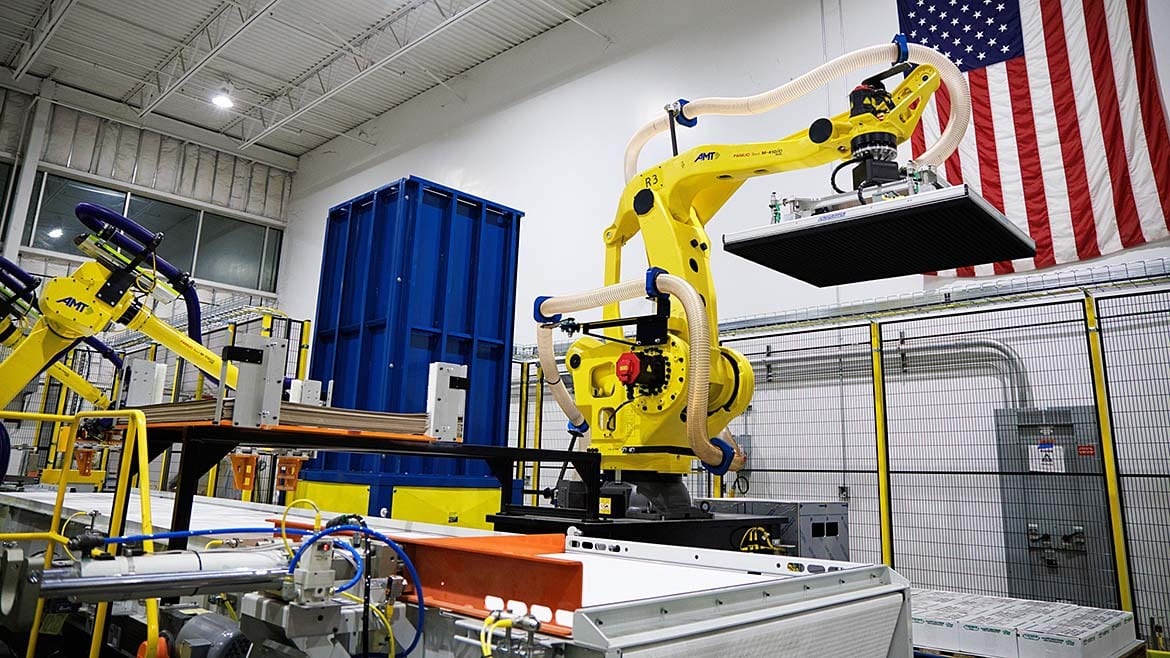Guest Column
Craig Salvalaggio
Guest Column | Craig Salvalaggio
Automation and quality improvement are no longer separate tracks; they’re increasingly one and the same.
Enhancing Manufacturing Quality Through Automation: A Strategic Approach

Manufacturing leaders have always cared deeply about quality because it’s the one thing you can’t afford to compromise. Whether you’re in food and beverage, aerospace, or consumer goods, your customers expect consistency, safety, and performance. Companies have long pursued these goals through lean initiatives, Six Sigma programs, and continuous improvement efforts. Now, automation is emerging as a reliable way to extend and scale those practices.
Over the last two decades working in automation and systems integration, I’ve seen how automation has evolved from a cost-reduction tool to a driver of consistency, precision, and transparency. Today, it’s not just about adding robots to a line—it’s about using technology to support quality at every step of production.
Practical Automation That Supports Quality
Several developments are making this shift possible. Automation is more accessible than ever; systems are easier to program, integrate, and support thanks to advances in user interface design and software. Machine vision systems that once required extensive programming can now be deployed with far less effort. AI and intuitive controls have helped simplify setup without sacrificing capability.
One area that’s grown rapidly is collaborative robotics, or cobots. These robots are designed to work safely alongside people without requiring fencing in most applications. At our company, one example of this is our collaborative palletizing system built on the FANUC CRX platform. It offers a compact, mobile solution for manufacturers who need automation but can’t spare the floor space or downtime to install traditional robotic systems. And beyond layout considerations, these systems are helping reduce injury risk and improve consistency in end-of-line handling: both important quality factors.
Quality expectations have also evolved. There’s increasing pressure to reduce rework, avoid downtime, and catch issues early. Sectors like food and beverage, pharmaceuticals, and high-precision manufacturing are especially sensitive to even small defects. Automation can help detect and respond to problems faster and with more consistency than manual inspection alone.
We’re also seeing growing use of:
- Collaborative (cobot) and mobile (AMR) robotics for adaptive, human-friendly automation.
- Advanced vision and metrology tools for inline inspection.
- Data-connected systems that monitor key metrics and support traceability.

Caption
The standard provides a systematic approach to sampling without overtaxing resources.
“Pull Quote”



An autonomous mobile robot (AMR) in operation at Applied Manufacturing Technologies, supporting flexible material movement and real-time production efficiency. Source: Applied Manufacturing Technologies
A high-speed robotic palletizing system designed and integrated by Applied Manufacturing Technologies, featuring a FANUC industrial robot for precision handling. Source: Applied Manufacturing Technologies
A robotic case packing system developed by Applied Manufacturing Technologies integrates FANUC robotics with end-of-line automation to improve efficiency and precision. Source: Applied Manufacturing Technologies
Planning with Purpose
A successful automation project begins with clear goals. Too often, manufacturers jump into implementation without first identifying what needs to change, or how they’ll measure success.
We start by asking: What process are you trying to improve? Where are the risks to quality? What does success look like?
That discovery process is critical. At AMT, we guide our customers through evaluating current capabilities, identifying improvement areas, and matching solutions to real needs. Sometimes the best answer is automation. Other times, it’s resolving upstream variability or improving standard work first.
Risk assessments play a key role here. They help identify safety concerns, project scope gaps, and technical risks that could derail a deployment. The earlier these are addressed, the better the project outcome.
Validating What Works
After planning, the next step is validation. Whether through a proof-of-concept, simulation, or pilot, testing ideas before full deployment helps avoid surprises.
We also emphasize formal acceptance testing. Factory acceptance testing (FAT) allows equipment to be reviewed before it leaves the supplier. Site acceptance testing (SAT) confirms that the system performs in the customer’s environment. These steps are critical to ensuring that expectations are met—and that your internal teams are ready to take ownership.
Choosing an Integration Partner
Technology alone doesn’t guarantee results. Selecting the right integration partner makes a difference in how smoothly your system starts up and how well it performs over time.
We advise companies to consider:
- Internal readiness and level of automation experience
- Whether the integrator has a track record with similar projects
- Cultural fit and communication style
- Credentials, such as RIA or CSIA certification
- The level of post-installation support offered
Good partners aren’t just vendors, they’re collaborators who help you adapt, refine, and grow your automation strategy.
Sustaining Success
To realize the full value of automation, support and training are just as important as the equipment itself. Your team needs to understand the system and feel confident operating it. That’s why we emphasize documentation, training, and building internal ownership.
In addition, having a plan for maintenance, spare parts, and system updates helps ensure that performance remains consistent long after the initial launch.
Looking Ahead
Automation and quality improvement are no longer separate tracks; they’re increasingly one and the same. As tools become more capable and flexible, they offer new ways to meet rising quality expectations while supporting the people and processes that drive production.
Success depends on more than just technology. It takes careful planning, strong partnerships, and a commitment to continuous improvement. But when those pieces come together, automation becomes a valuable tool not just for doing things faster, but for doing them better.

